My thoughts on the new representation
of nuclear forces and particles by Edo Kaal.
of nuclear forces and particles by Edo Kaal.
When someone presents a new model to replace the standard model, I normally prefer to view it from a distance. I usually figure you don't want to encourage these people or they will be seeing spooks behind every door.
But because that is my preference, I force myself to counteract the tendency. I purposely read Flat Earth, JQ, Illuminati, etc articles on a regular basis in case one of them finds something that actually describes the facts better than the current model.
I am not, at this point, saying that the Structured Atom does this. In fact, it so completely contravenes my own personal theory of cosmology that I literally keep throwing my hands up in the air as I study. But it seems to be internally consistent, describes the basic facts well, and predicts some things what we actually observe. Does it predict them better than the current model? No, I don't think it does (yet), but it does so with fewer Occam entities.
So here's what I'm considering.
Assumptions can misapply data. The current model is vastly supported by empirical data, but some of that data requires vast amounts of energy pumped into a tiny target to get one or two subnuclear particles to misbehave so that a complete system of thought can be applied. Because they make certain assumptions, like particles always decaying at the same rate, the data keeps showing mysteries that must be explained by more and more Occam entities.
Sometimes simpler is better. But that doesn't get government grants.
What it the Structured Atom Model?
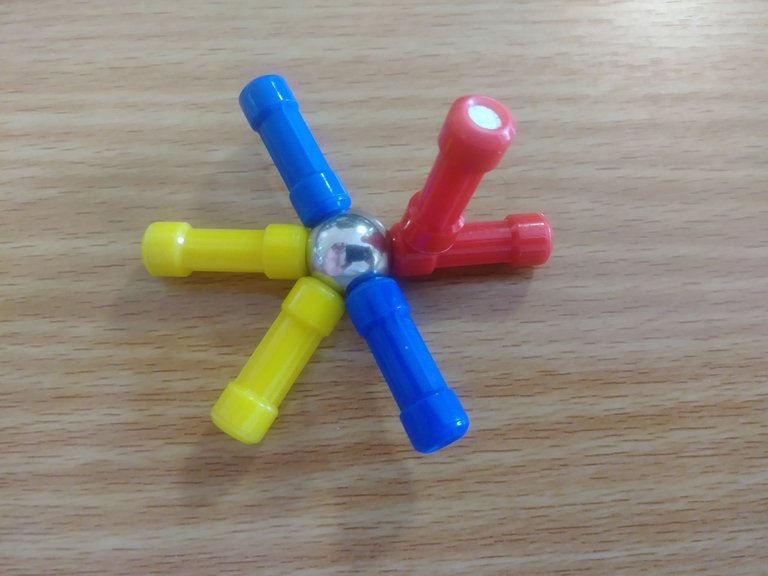

In my illustrations, these are represented by the yellow magnet, the chrome ball, and the magnetism, respectively. Here we see a chrome proton and a yellow electron. Normally these would be attracted to each other, but unlike the current model, they would join without annihilating each other.
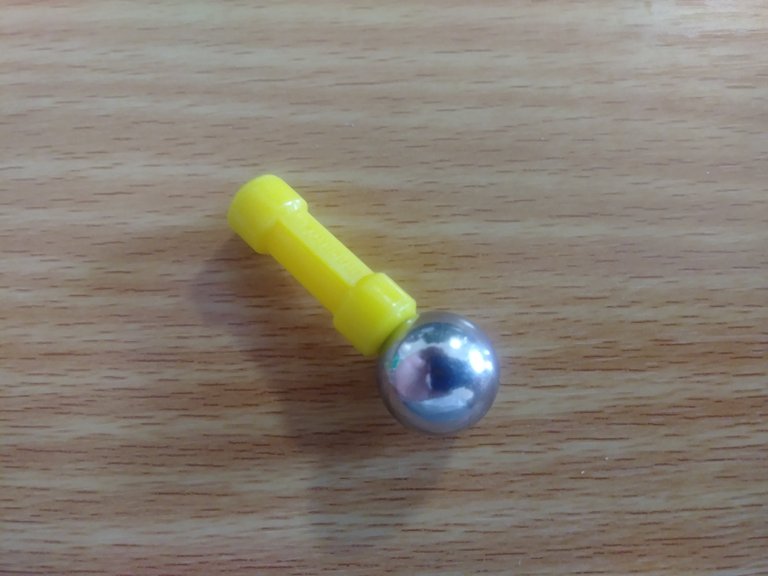
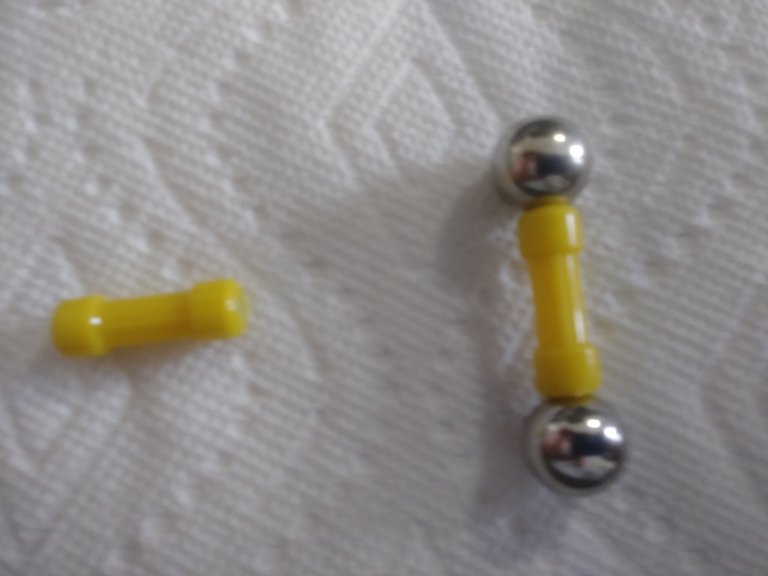
What we see here is the normal deuterium hydrogen atom. In the current model this would be one proton and one neutron in the nucleus, and one electron in the orbital. Here we show it as two protons connected by one electron, and one electron in the orbital.
Important (IMO) to consider is that we are not saying that one proton and one electron makes a neutron, but that two protons and an electron make a stable structure with a positive charge of one(1) and is balanced by the negative charge of the electron (-1).
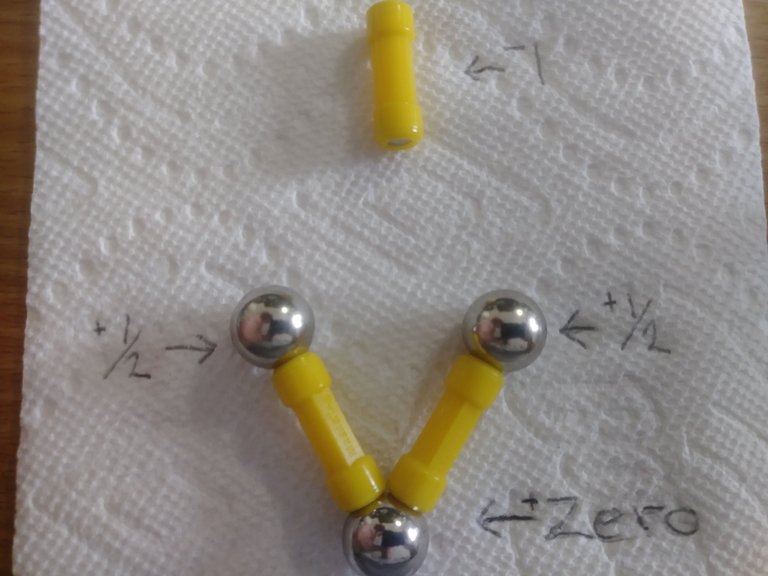

The first is unstable, as I see it, because the physical structure has unbalanced charges. The proton marked zero in my illustration has zero electrostatic force on it and can easily take one of the electrons and decay into a protium leaving deuterium behind.
The second is in fact stable and represents He3, a fairly rare but natural isotope of Helium. The nucleus has a net positive charge of 2 and there are two orbital electrons.
In this illustration the green magnets are going to be used as structural spacers only. They are just to hold the protons equidistant from each other. They do not exist in their model and are only here because that's how these toys work. I'm hoping that by comparing my shapes to their shapes (which use spherical magnets for protons and no shape for electrons), that you will understand what they are saying better.
bound by one electron giving
a net positive charge of one(1) per pair
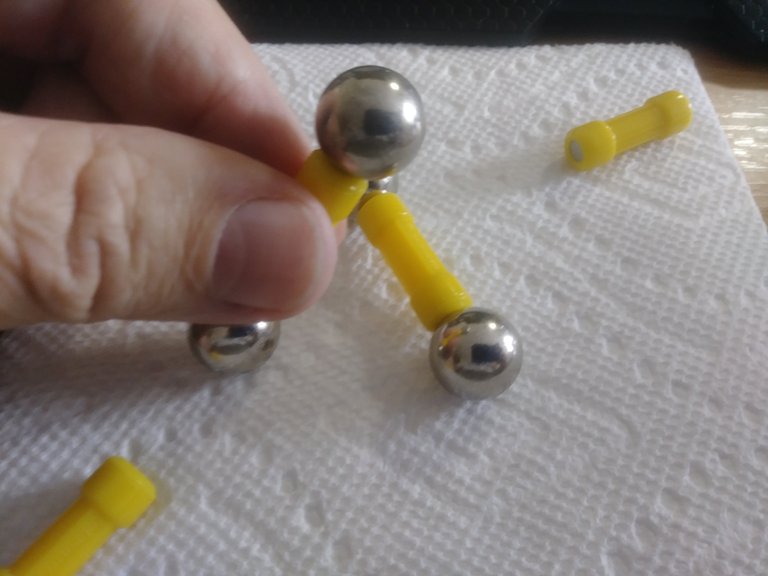
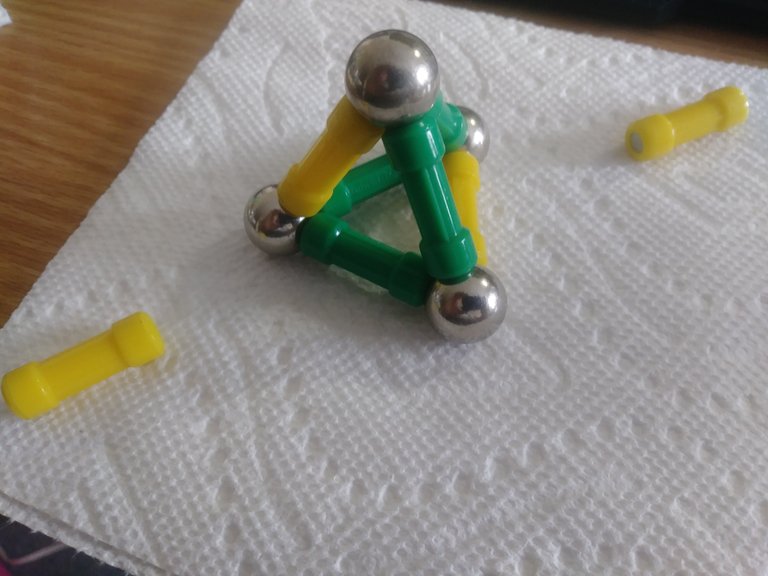
In their model it has all the same properties, but consists of four electrons and four protons. The nucleus has two sets of two protons which are bound by tone electron each. I will give you a pair of photos again, illustrating the bounded pairs and then demonstrating the structural spacers I use to keep things lined up.
This forms a tetrahedron and balances all charges. The two orbital electrons can be perfectly balanced against the residual positive charge (2 electrons + 4 Protons = (-2)+4=2) and so the predicted inert noble gas is achieved.
This is already too long, so let me leave you with one more image, the carbon nucleus. Their graphics show a dense packing of spheres and leaves out the electrons binding the proton pairs. This example shows 12 protons and 6 yellow electrons making a nucleus with a net positive charge of six. Six electrons in the orbital shell produces the most common stable isotope with all the predicted qualities, as you can see on their pages.
I have yet to work out a better explanation of their chemistry model, but I see how theirs works and hope to find a clear illustration soon. Again, I am not saying that this is a true model. It's just a consistent one that is not completely ignorant. No, it hasn't had 200 years of the smartest people figuring out answers to all your questions yet, so yes, there will be large holes.
And the whole thing was formed for two reasons, one good, one not so good. The first is to return simplicity to the model and that's a good thing and this does it well. The second is to provide support for the Electric Universe model. Whether you believe in that model or not, inventing one model to support another model is not good science.
You know, unless it turns out to be right.
All images my own
Please see the Structured Atom Model
for the original authors.

That's the good your post
Really? Thanks. But what did you find good about it? Do you have any thoughts to add on the matter?
Yes i have
Hey, my friend @baerdric,
I hope you're doing OK?
I was working on an update to my library when I tripped across a sci-fi story that you wrote, that I absolutely loved, and that reminded me to come check out your blog.
I'm too late arriving to reward this article with a vote, but if you reply to this comment, I will vote the heck out of your reply... THANK YOU for taking the time to write about this and to do the very cool magnet/ball illustrations and video.
I am a dabbler in everything, and I have found the concepts of the electric universe to be fascinating. I find this theory very intriguing just on the basis of its elegant simplicity. Occam's razor, and all that...
Anyway, I wish I had seen this two months ago, but glad to see it now and wanted to say Thank You! :D
😄😇😄

Always good to hear from you. I've been preoccupied with personal issues for a while now, so I apologize for the delay in responding.
Hey, no worries my friend! I'm just glad to hear back from you! I hope you're managing to steer things in a good direction.
Thanks for your reply, and drop by when you can... :D